
Understanding Brand Archetypes and How They Shape Business
Swiss psychologist Carl Jung believed that certain universal patterns and images are present within the psyche. These archetypes are present in the unconscious and can be seen throughout history, culture and personal experience.
For instance, the “wise old man” archetype is defined by someone with great judgment and wisdom. It may apply historically to someone like Benjamin Franklin, while in literature, it can refer to characters like Yoda in “Star Wars” and Gandalf in “Lord of the Rings.” Maybe you can link those characters’ behaviors — and draw comparisons to people in your life — to the archetype known for being intelligent and willing to offer guidance.
What does all of this have to do with brand identity? If people can recognize certain characters and their fundamental desires, strengths and weaknesses, then maybe there is a parallel to business. Marketers have modified Jung’s archetypes to create brand archetypes, offering a shortcut to storytelling and helping customers connect to a company.
How Archetypes Can Help Shape a Brand’s Identity and Drive Sales
Although there is some psychological debate on whether Jung’s archetypes are truly embedded in the unconscious and the role they play in the mind, the relevance in branding is less complicated. Archetypes, at the very least, enable people to connect to a character or others on a fundamental level. Thus, the same can be said for consumers and brands.
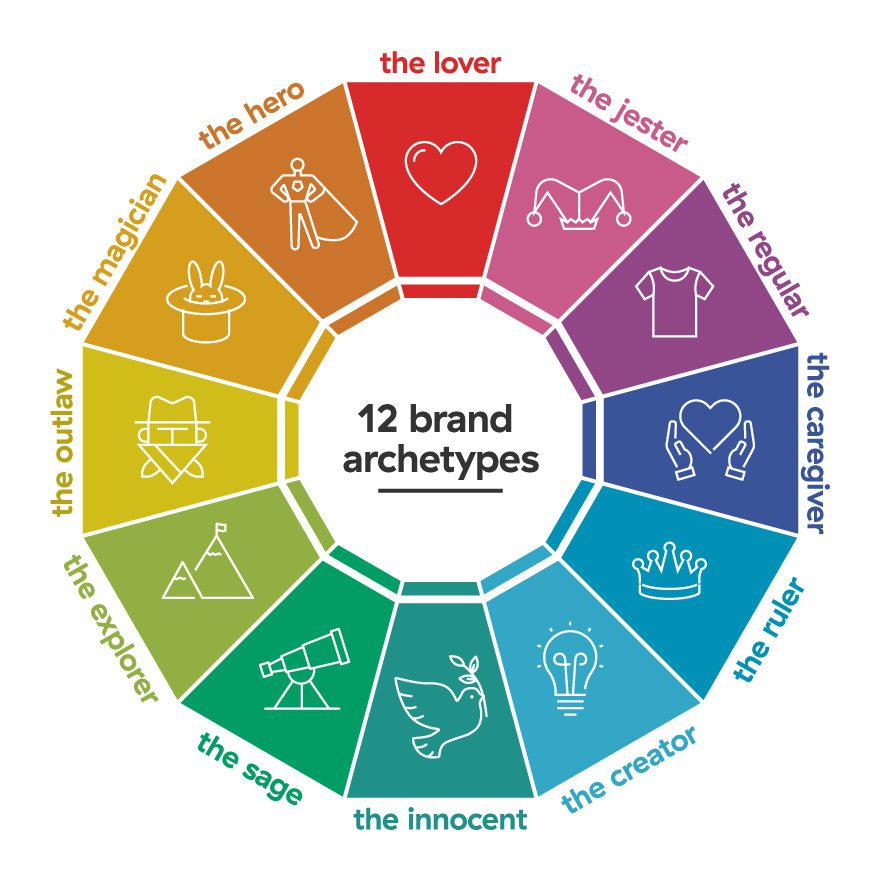
Brand archetypes mirror Jung’s character archetypes. For instance, there are companies that fit into the “wise old man” archetype, and use the appropriate values, meanings and personality traits to help define what the business is all about. Why would they want to do that? People instinctively recognize who the wise old man is and what he offers. The same is true for the “hero” archetype that exudes bravery and strength. Individuals, whether watching a movie or an advertisement, can identify with these fictional characters (Superman) and companies (Nike).
Obtaining that instant connection can help a brand appeal to consumers in a basic, even subconscious, way. An instant and instinctive connection to a brand or product is incredibly valuable. Purchasing decisions are made on a subconscious level, according to research compiled by marketing agency GetUplift.
• People who experienced brain damage to areas of the brain responsible for generating emotions were unable to make decisions, according to neuroscientist Antonio Damasio. He noted that they still had logic and reasoning, but they couldn’t make simple decisions.
• A study compared two types of ads: one type appealed to logical persuasion while the other focused on non-rational means, such as fun, vague or sexy scenes. The first type boosted brain activity in regions for decision-making and emotional processing, but this is also the area involved in limiting impulse purchases. The second type of ads didn’t cause major activity in those regions of the brain, which means that less behavioral inhibition is present when a “buy” button is present.
• Another study examined how the design of online stores impacts buyer behavior. It found that “web atmospheric cues such as vividness and interactivity had significant positive effects on users’ valence and arousal rates,” the researchers concluded. “Furthermore, users experiencing higher arousal and more positive valence [intrinsic attractiveness] rates reported higher intentions to purchase from the e-commerce website.”
Brands and marketers should take note. Consumers often act on inner urges and emotions. In fact, these motivations are so powerful that, according to professor and author Gerald Zaltman, 95 percent of purchasing decisions are subconscious. Emotion drives purchasing behaviors and decision-making.
One way to tap into consumers’ emotions is to mix universally recognized archetypes with brand identity. The resulting brand archetypes allow companies and marketers the opportunity to connect with consumers in an instinctual way. Each brand archetype has specific strengths, voice and an overall goal that can be harnessed.
The 12 Brand Archetypes
Here are the 12 brand archetypes that companies can choose from to help define their identity. Choosing just one brand archetype is important for following a single narrative and set of values.
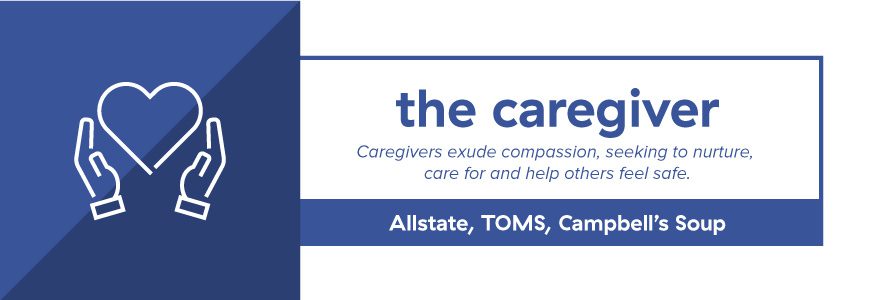
1. The Caregiver
Caregivers exude compassion, seeking to nurture, care for and help others feel safe.
In everyday life, caregivers are those people who are there for you. Mother Theresa embodies this archetype, as she is well-known for her selflessness and generosity. When it comes to companies, brands like Johnson & Johnson and Pampers have a natural path to the “caregiver” brand archetype, given the products those companies produce. Others, like Allstate, TOMS Shoes and the Campbell Soup Company implement the considerate, thoughtful and kind voice that the archetype requires.

2. The Creator
Creators seek to innovate through imaginative, artistic items that create value.
Seeing a new idea to the end is one of the greatest joys for a creator. You find that certain something in people like Tim Burton and Leonardo Da Vinci — that imaginative, expressive, perfectionistic drive that motivates them. Companies like Lego and Adobe fulfill that description, too.

3. The Explorer
Explorers seek freedom through new approaches and adventures.
Pushing the limit is a typical perspective for an explorer. Instead of following the same path, explorers look to pioneer new paths. Challenges are accepted. Amelia Earhart and Indiana Jones characterize this calling. Brands like Starbucks, Jeep and North Face are often associated with the brand archetype.
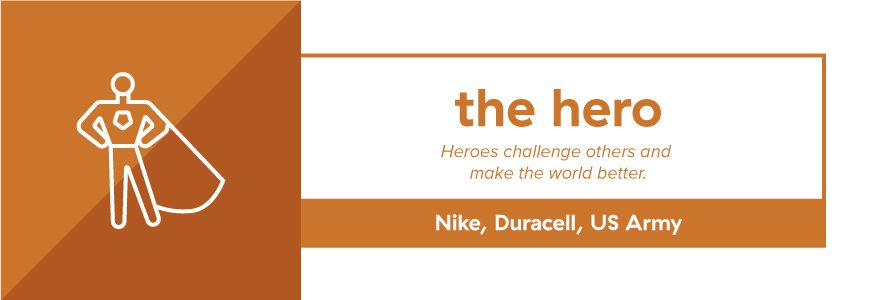
4. The Hero
Heroes challenge others and make the world better.
There is nothing subtle about a hero. Heroes confront challenges and seek opportunities for change, and they do it through courage, boldness, strength and inspiration. Superman and Michael Jordan are two heroes in fiction and sports. Heroic brands include Nike, Duracell and the U.S. Army.

5. The Innocent
Innocents are simple, pure and believe the world is a good place.
An innocent is wholesome and idealistic. He or she just wants to be happy and for others to see the good in life. Examples of people for this archetype include Forrest Gump and Mary Poppins in movies, and in real life, Dolly Parton and Shirley Temple. Companies linked to this set of characteristics include Dove, Coca-Cola and Snuggle.

6. The Jester
Jesters want to have fun and live in the moment.
Playful and mischievous, the jester tells the truth through jokes and light-heartedness. If you’re looking for seriousness, you won’t find it with the jester. Any famous comedian can be linked to the jester, and related brands include GEICO, Skittles, Old Spice and Ben & Jerry’s.
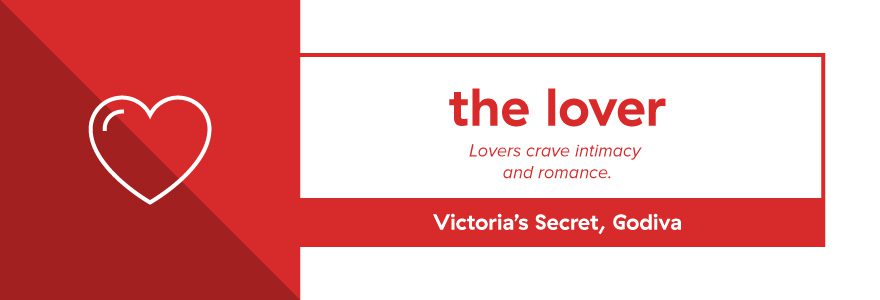
7. The Lover
Lovers crave intimacy and romance.
The lover is passionate and appreciates beauty. These people and companies want others to feel glamorous inside and out. People like Marilyn Monroe, Liz Taylor and Madonna are said to be associated to this archetype. Brands classified as “lovers” are often found in fashion, jewelry, cosmetics, food and travel, such as Victoria’s Secret and Godiva.
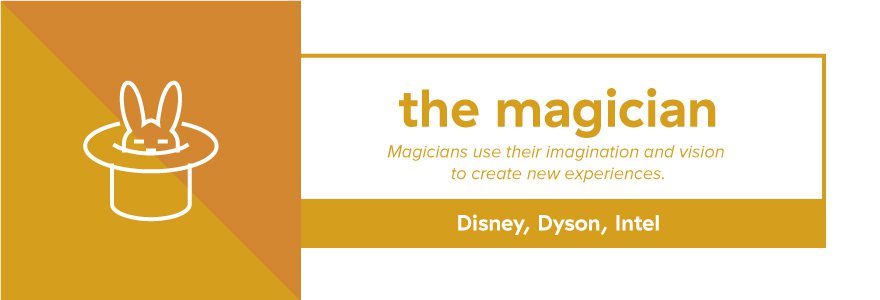
8. The Magician
Magicians use their imagination and vision to create new experiences.
A magician wants to make dreams come true. Transforming situations, impacting people and changing the world are common sentiments among these people and companies. Steve Jobs and Martin Luther King epitomize this idea, along with companies like Disney, Dyson and Intel.

9. The Outlaw
Outlaws break the rules and create their own path.
An outlaw is not satisfied with the status quo. Rebellious and seeking change, the outlaw fights authority and anything that stands in the way of change. James Dean is associated with the “outlaw” archetype, and brands include MTV, Harley Davidson and Virgin.
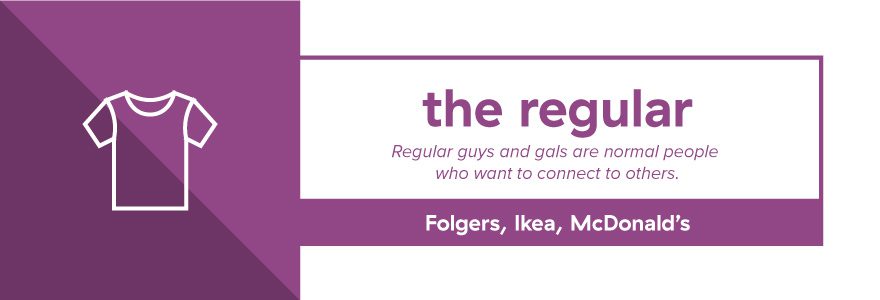
10. The Regular Guy or Gal
Regular guys and gals are normal people who want to connect to others.
Down to earth and unpretentious, the regular guy or gal seeks belonging. He or she doesn’t expect all that much from life, but has solid virtues, street smarts, empathy and is practical. Consider people like Rachael Ray and Drew Barrymore within this identity. Home Depot, Folgers, Ikea and McDonald’s are good examples of this accessible, friendly brand archetype.
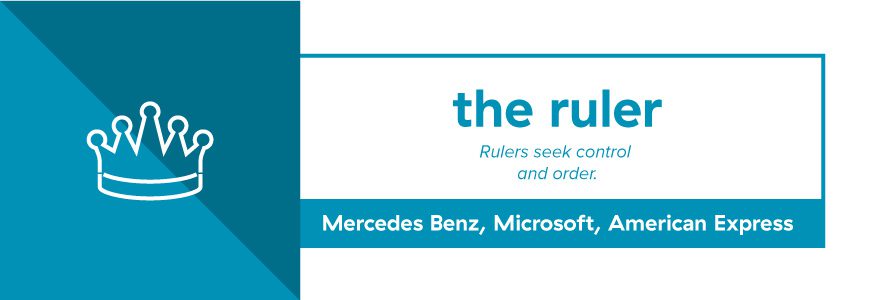
11. The Ruler
Rulers seek control and order.
The ruler is responsible and organized. By inspiring people to take responsibility in their lives, the ruler is able to help make things better. Leadership and influence, if harnessed properly, enables rulers to succeed. This archetype is extended to several political leaders and brands like Mercedes-Benz, Microsoft and American Express.
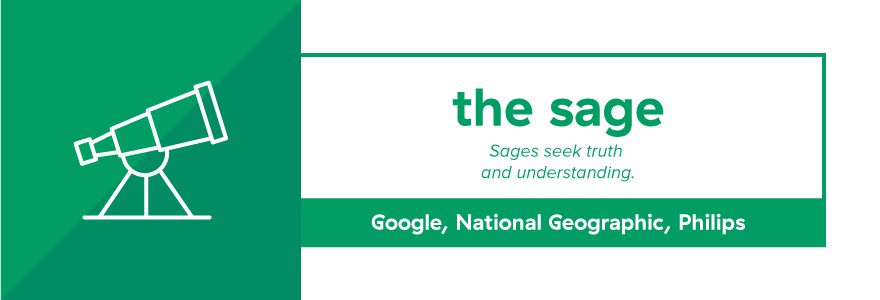
12. The Sage
Sages seek truth and understanding.
Deeply reflective and analytical, the sage is focused on wisdom and insight. This person or company examines complex issues and, once information and solutions are obtained, shares results with the world. Albert Einstein and Bill Gates exemplify this archetype in real life, and brands assuming this identity include Google, National Geographic and Philips.
Help Companies Find Their Identity
Brand archetypes represent one of many ways for companies to connect to their audience.
Looking for more methods to appeal to customers’ emotions and desires? Earning a M.A. in Business Administration can help you gain the knowledge and skills needed to successfully lead a business. In a convenient and flexible learning environment, you’ll develop a strong understanding of fields like marketing, accounting and economics, in order to become a successful business leader.
There is no GMAT required. William Jessup’s program features faculty members who are experts in their fields and have held positions such as CEOs, marketing directors and vice presidents of finance. The university was ranked No.4 for “Best Value School” by U.S. News & World Report.
